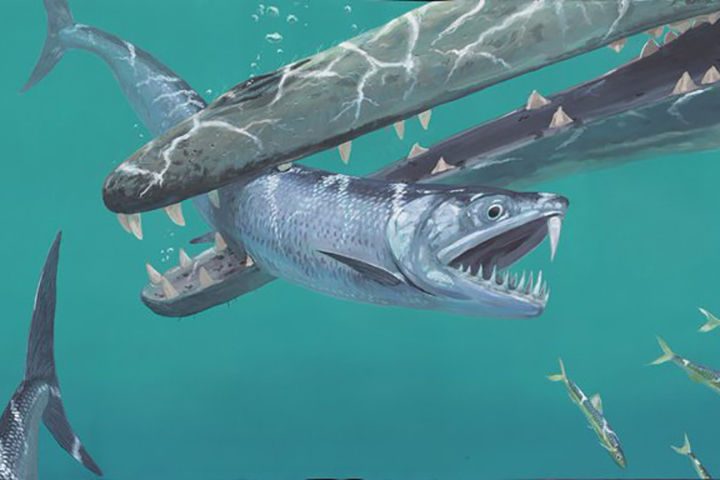Anchovies weren’t always the tiny, plankton-munching pizza toppings we know today. The finger-long fish had super-sized ancestors that preyed upon other creatures using a single, comically large fang in the middle of their upper jaw, according to new research.

Scientists say they’ve discovered two ancient, predatory ancestors to modern-day anchovies based on a pair of fossils that had been sitting in museums for decades. They say the discovery sheds new light on the evolution of anchovies by showing that they weren’t always small-bodied plankton eaters.
A few of them were child-sized, sabre-toothed monstrosities, according to the fossil record.
One fossil was found in 1946 in Pakistan, while the other was unearthed in Belgium in 1977, according to the study published in Royal Society Open Science.
The Belgian fossil belonged to a fish known as Clupeopsis straeleni, according to the researchers. It measured about half a metre long and had a big, nasty middle fang in its mouth.
The Pakistani fossil belonged to a newly coined species called Monosmilus chureloides, which grew to be about one metre long and had many of the same features as Clupeopsis straeleni. Monosmilus means “single knife” in Ancient Greek, while chureloides is derived from “Churel,” the Urdu word for a vampire-like demon.
Both prehistoric fish shared characteristics with modern-day anchovies and lived during the Earth’s Eocene Epoch some 45-55 million years ago, the paper says. The earth was extremely warm and wet around that time, and the oceans were full of life — including plenty of fish and some early whales.
The findings are based on in-depth scans of the fish fossils, particularly around their heads.
Alessio Capobianco, co-author of the study and a researcher at the University of Michigan, says the giant anchovies may have evolved into predators after the dinosaurs were wiped out 65 million years ago.
“After that mass extinction, there was this juxtaposition of very familiar fishes and completely weird offshoots — bizarre evolutionary experiments,” he told the New Scientist.
“I would love to know how sabre-toothed anchovies tasted,” Capobianco added. “They probably would taste different because they ate other fishes instead of plankton.”
He added that it’s unclear why the giant anchovies are no longer around today.
But perhaps their extinction is for the best. We’ve already got “murder hornets” — we don’t need to worry about vampire anchovies in 2020.





Comments